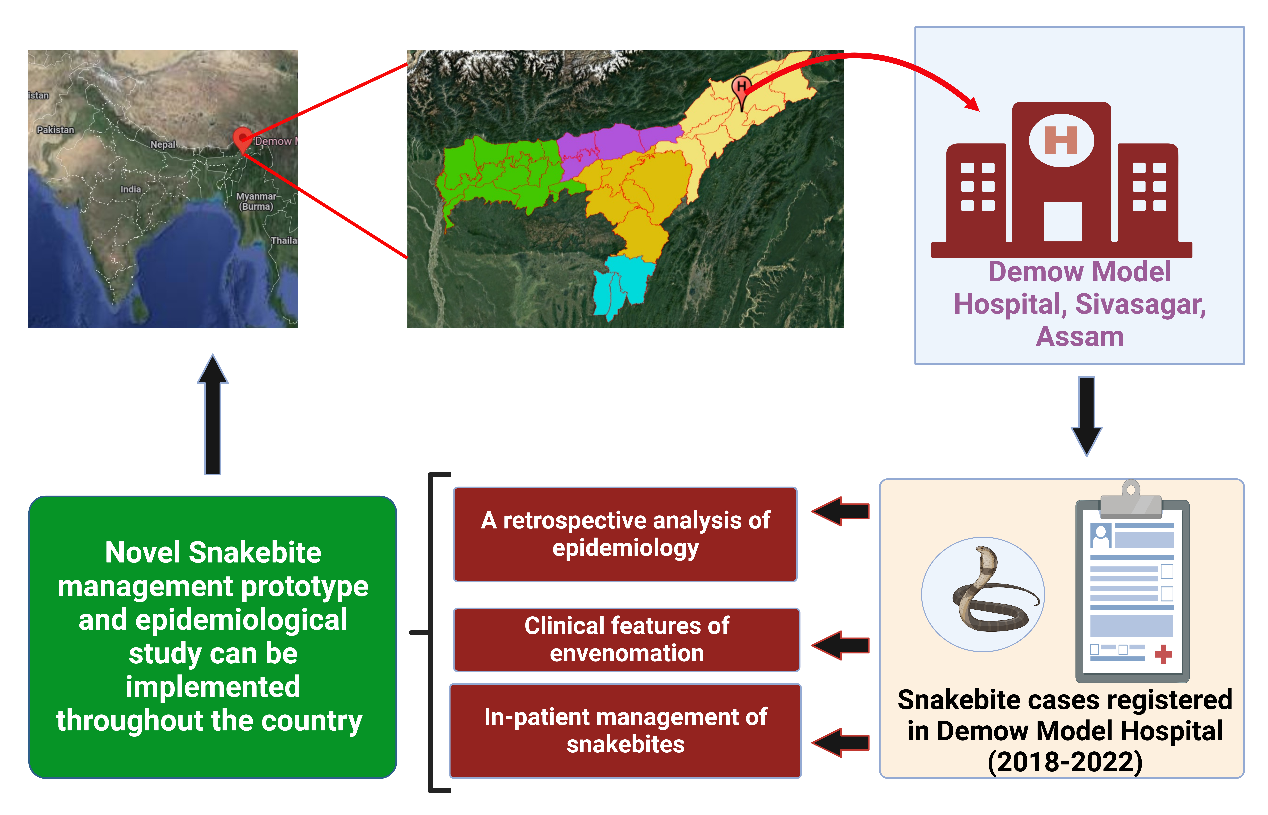A collaborative study consisting of clinicians, herpetologists, and volunteers shows that region-specific antivenom can improve management of snakebite treatment in Assam.
Snakebite is a neglected tropical disease (NTD) because it primarily affects marginalized populations in impoverished rural areas with limited healthcare services. According to the World Health Organization, there are ~5.4 million snakebites yearly; however, in the Indian subcontinent, the actual magnitude of the snakebite problem is far from the reported value.
Assam is a biodiversity hotspot, has a unique distribution of venomous snakes from the rest of the country and is predominated by the Indian monocled Cobra (Naja kaouthia), banded krait (Bungarus fasciatus), greater black krait (B.niger), lesser black krait (B. lividus), King cobra (Ophiophagous hannah), green pit viper (Trimeresurus erythrurus), and Salazar's pit viper (T. salazar), etc. Sadly, the snakebite data remains elusive in Assam. Epidemiological studies help estimate the incidence, prevalence, and mortality rates associated with snakebites, which is crucial for government agencies' public health planning and resource allocation.
Recently, a group of Scientists and research scholars from the Institute of Advanced Study in Science and Technology (IASST), Guwahati, an autonomous institute of the Department of Science and Technology, Tezpur University, Tezpur Assam, and Amrita School of Nanosciences and Molecular Medicine, Kochi, Kerala led by toxicologist and Director of IASST Prof. Ashis K. Mukherjee, conducted a retrospective and observational study of snakebite in collaboration with clinicians Dr. Surajit Giri and his colleagues at Demow Government Community Health Centre, Sivasagar, Assam. The study shows that about 1011 patients were bitten by snakes in this small region in the last five years, of which 13.7% were venomous bites. Treatment with several vials (10-30) of commercial polyvalent antivenom somehow could save the lives of patients bitten by Cobra and Kraits; however, antivenoms are ineffective in neutralizing the clinical effects (coagulopathy) of pit viper venoms. This study shows the requirement for region-specific antivenoms for better-managing snakebites in this region.
The study also highlighted a specific protocol by forming Venom Response Teams (VRT) comprising clinicians, herpetologists, and volunteers for effectively managing snakebites in a rural health centre. Prof. Mukherjee emphasized that this study is an eye-opener to the country's other primary and tertiary health centres to adopt the same prototype for reducing snakebite mortality and morbidity. This study published in the July issue of the journal Toxicon (Elsevier) is an excellent example of collaboration between basic scientists and clinicians. He further opined that the involvement and contribution of government policymakers and stakeholders are vital to mitigate the snakebite problem in India.
Publication Link: https://doi.org/10.1016/j.toxicon.2023.107175
For further communication about the story: Prof. Ashis K Mukherjee (akm[at]tezu[dot]ernet[dot]in)



























